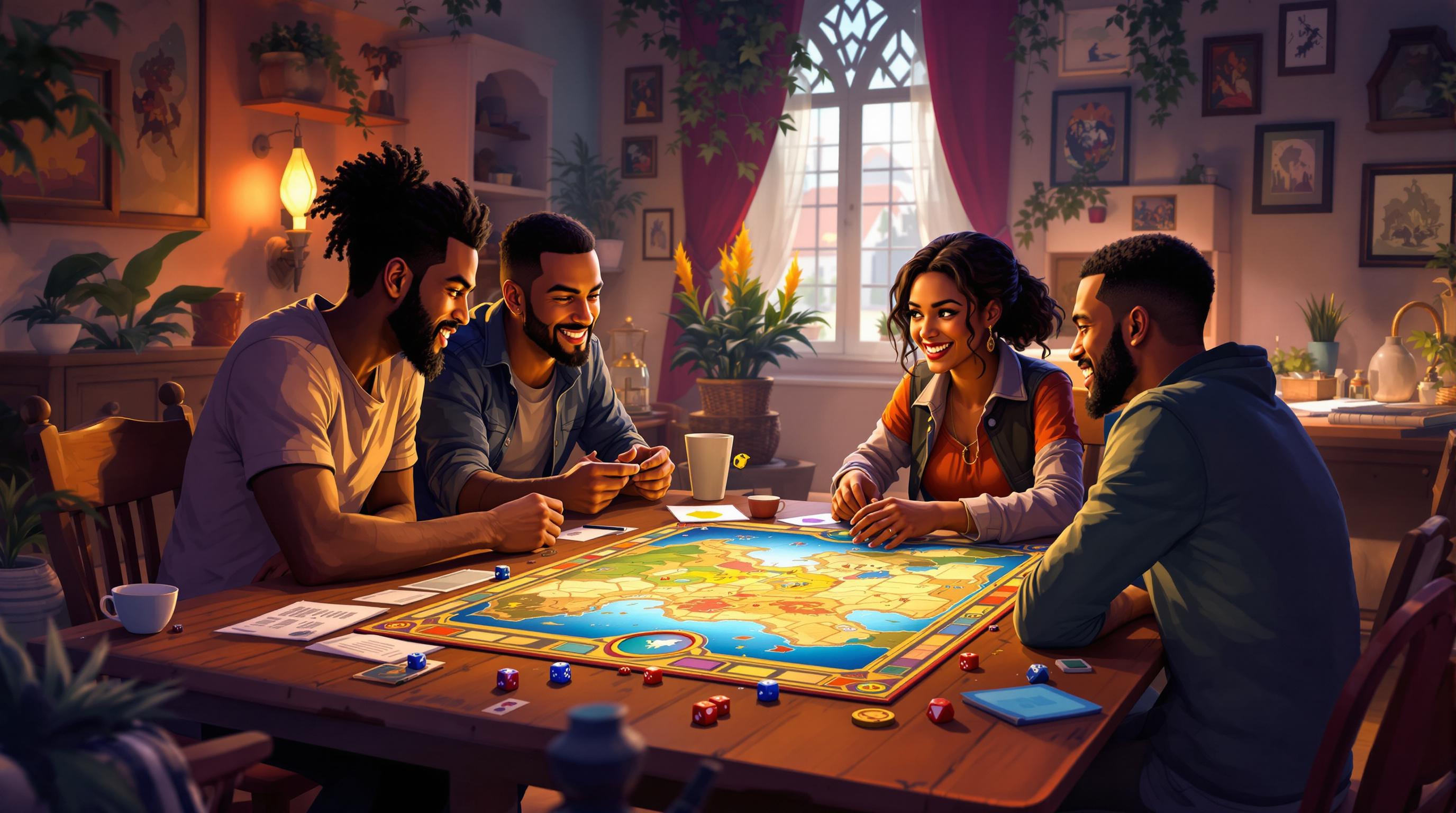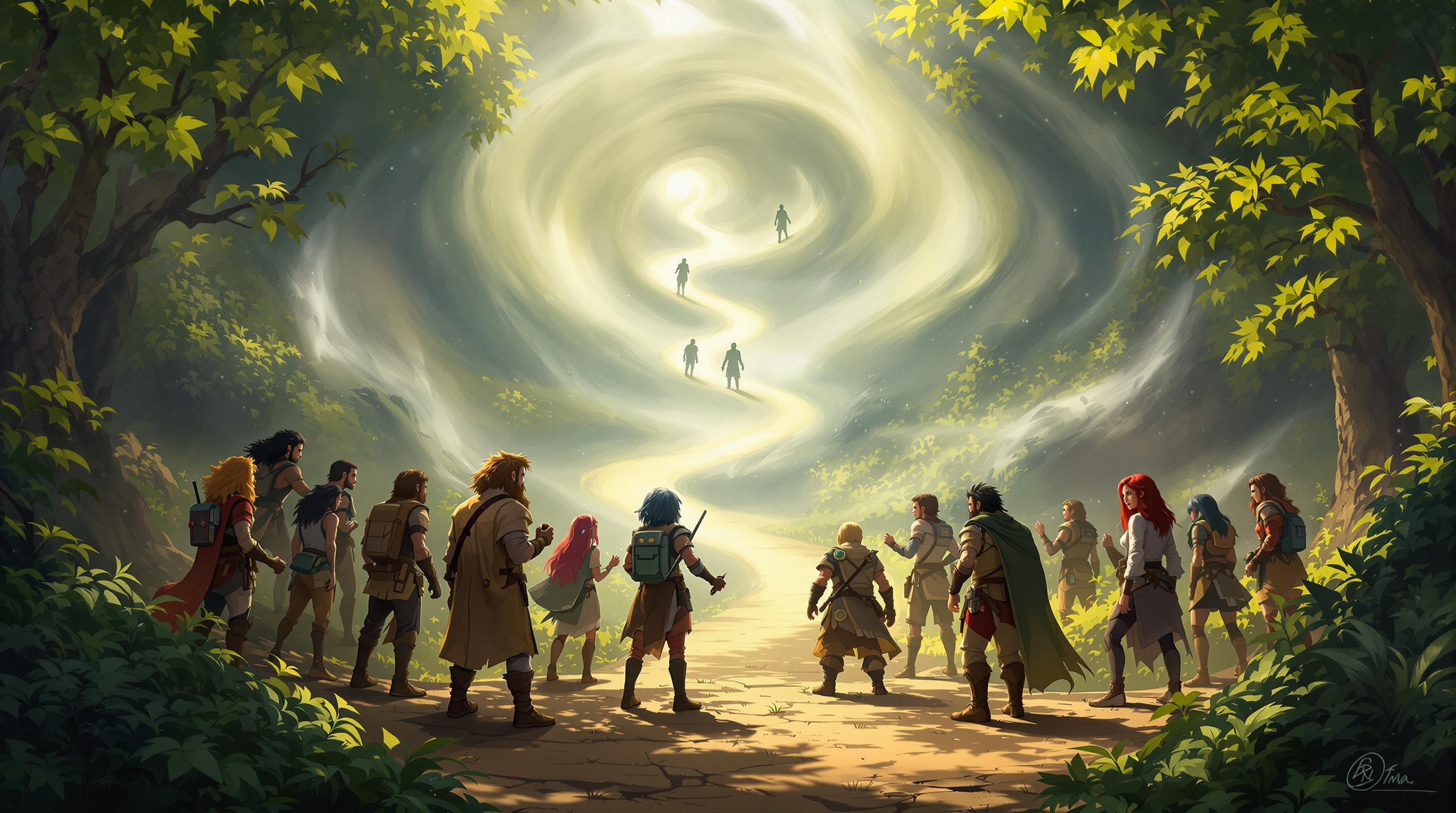In tabletop role-playing games (TTRPGs), rewards - whether gold or magic items - are crucial for player motivation and game balance. Here's a quick overview of how they compare:
Key Points:
- Monetary Rewards: Flexible, used for purchases, but can feel less exciting over time. Risks include inflation and excessive wealth without enough spending options.
- Magic Items: Add unique abilities and story depth but can disrupt balance if overused. They’re more impactful in low-magic settings.
Quick Comparison Table:
| Aspect | Monetary Rewards | Magic Items |
|---|---|---|
| Flexibility | Broad spending options | Limited to magical uses |
| Rarity | Common | Rare, setting-dependent |
| Game Balance | Managed through pricing | Risky if too powerful |
| Player Interest | Diminishes at high levels | Sustained by uniqueness |
| Story Impact | Affects in-game economy | Tied to narrative events |
Both options have pros and cons, and the right balance depends on your campaign's tone and player expectations. Dive in to learn how to design rewards that keep gameplay engaging and balanced.
Gold VS Magic Items and How to Balance Them for D&D
Monetary Rewards in TTRPGs
What Are Monetary Rewards?
Monetary rewards refer to in-game currency that players use to make purchases and manage resources. This currency plays a key role in character progression, allowing players to buy equipment, hire services, or even acquire property.
Effects on Gameplay
In-game currency impacts both player decision-making and the broader game economy. When balanced correctly, it encourages thoughtful choices and keeps the game economy stable.
| Economic Challenge | Impact on Gameplay | Possible Fix |
|---|---|---|
| Inflation | Reduces the value of currency | Add ways to remove money from circulation (currency sinks) |
| Excess Wealth | Leads to a lack of challenge | Introduce more spending opportunities |
| Limited Options | Makes spending less engaging | Offer a variety of items or services to purchase |
Player Views on Monetary Rewards
Players interact with monetary rewards differently depending on their preferred playstyle. For instance, systems like "Favor" allow players to earn points they can trade for exclusive items or services [1]. This approach often appeals to those who enjoy planning and managing resources strategically [5].
"Common pitfalls to avoid when designing monetary reward systems include creating a system that is too complex or convoluted, providing too much or too little currency, and failing to create a sense of value and scarcity for monetary rewards" [1]
Creative systems like "Favor" or "Wealth" add layers of strategy, keeping monetary rewards engaging and balanced. While these rewards shape the game's economy, magic items provide a different kind of motivation, blending power with storytelling elements.
Magic Items in TTRPGs
What Are Magic Items?
Magic items add a layer of excitement to gameplay by providing characters with abilities and advantages that go beyond standard equipment. From healing potions to legendary weapons, these enchanted objects not only enhance character performance but also drive the story forward. Depending on the campaign, each item can carry its own unique lore, enriching the game world and player experience.
Impact on Game Balance
The campaign setting plays a big role in how magic items are distributed, which directly affects game balance. While powerful items can make gameplay more dynamic, distributing them too freely can lead to problems like the "Christmas Tree Problem", where characters are overloaded with magical gear. In low-magic settings, items are harder to come by and often more expensive, whereas high-magic worlds make them easier to access [4]. This adaptability allows Game Masters to keep the game challenging while maintaining fairness.
Player Interest in Magic Items
Magic items are a favorite among players because they combine mechanical power with rich storytelling. Beyond their in-game benefits, these items often represent major achievements or turning points in the story [3]. The level of magic in the setting also influences how players react to these items. For example, finding a rare and powerful artifact in a low-magic campaign feels far more rewarding than stumbling upon the same item in a setting where magic is everywhere [4]. This balance of scarcity and story impact keeps players engaged over the long haul.
Magic items thrive on their ability to blend gameplay enhancements with meaningful narrative moments. Striking the right balance between their power and their story value is key to understanding their role compared to other rewards, like monetary compensation, in TTRPGs.
sbb-itb-b8b00a5
Comparing Monetary Rewards and Magic Items
Pros and Cons
When it comes to rewards in TTRPGs, monetary rewards and magic items each bring their own set of perks and challenges for players and game masters. Here's a side-by-side look at how they stack up:
| Aspect | Monetary Rewards | Magic Items |
|---|---|---|
| Flexibility | Useful for a variety of purchases | Limited to magical effects |
| Availability | Easy to come by | Often rare and harder to obtain |
| Game Balance | Managed through pricing | Can disrupt balance if too powerful |
| Player Engagement | Diminishes at higher levels | Keeps interest with rarity and uniqueness |
| Storage/Usage | Restricted by carrying capacity | Limited by attunement slots |
| Story Impact | Affects in-game economy | Adds depth to mechanics and narrative |
Knowing the pros and cons is just the start - figuring out how to balance these rewards in your campaign is where things get interesting.
Balancing Rewards
Striking the right balance between monetary and magical rewards depends on your game's economy and the prevalence of magic in the setting. For example, in a low-magic world, even a simple magical item can feel extraordinary, while in high-magic campaigns, players might expect grander treasures to stay engaged.
One way to maintain balance is by using a dual economy system. This separates mundane purchases, which are handled with gold, from magical acquisitions, which could use a secondary system like "favor points." For instance, favor points might be earned through quests or specific achievements, allowing players to obtain magic items without devaluing gold for everyday needs.
The secret to balancing rewards lies in understanding your campaign's tone and power level. By tailoring rewards to fit your world, you can keep both monetary and magical rewards relevant and exciting.
Conclusion
Key Takeaways
Rewards in TTRPGs, whether monetary or magical, play a crucial role in creating engaging gameplay. Gold offers purchasing power and supports in-game economies, while magic items add depth to both mechanics and storytelling. Striking the right balance between these two keeps the game fun and avoids issues like economic imbalance or overly powerful characters.
Tips for Game Designers
When crafting reward systems, here are some practical strategies to consider:
- Create rewards that force players to make meaningful decisions, like choosing between a rare magic item or enough gold to establish a base of operations.
- Implement a dual economy system, where gold is used for everyday expenses and a separate currency, such as favor points, is reserved for magical items.
- Match rewards to the magic level of your campaign. In low-magic settings, even small magical items should feel exciting and impactful.
These approaches can help game designers build systems that elevate gameplay and enrich storytelling.
Additional Resources
Check out the TTRPG Games Directory for examples of well-balanced reward systems across various games. It's a great source of inspiration for your campaigns.
FAQs
How many magic items should a level 20 have?
By official guidelines, a level 20 character typically has around 6 permanent magic items, with their rarity depending on the campaign's magic level [2]. In campaigns with lower magic, even one strong item can make a big difference. On the other hand, high-magic campaigns might allow for more items without breaking the game. Refer back to the earlier pricing structure for details on item rarity and costs.
However, too many magic items can lead to the "Christmas Tree Problem", where characters become overloaded with gear, throwing off game balance [2]. It's up to game designers or Dungeon Masters to carefully control how items are distributed, especially in campaigns where magic items are readily available for purchase.
The goal is to strike a balance between rewarding players and keeping the game's core mechanics intact. Proper management of magic items ensures a fun, fair, and engaging experience for everyone at the table.


